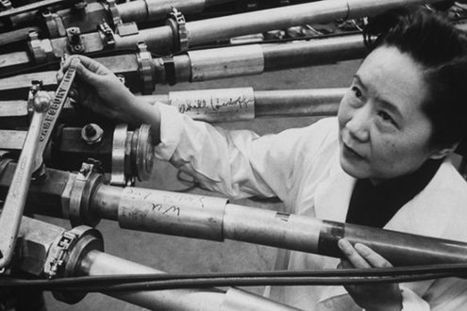hysics is full of mind-boggling theories. Over time, some of these ideas are tested through experimentation to advance the world’s view of how our universe works. Such was the case in the mid-1950s, when Chien-shiung Wu took on the task of demonstrating a theory and challenged a fundamental interaction of nature.
Physicists Tsung-dao Lee and Chen-ning Yang theorized that the widely accepted law of parity of physics didn’t hold up. In simple terms, the law of parity says that on a quantum level, objects such as atoms and neutrons have little dance partners: They’re the same in every way, balancing each other out, so anything one does, the other does as well—like looking in a mirror.
Lee and Yang submitted that this wasn’t always the case and asked Wu to prove it. Wu took some radioactive cobalt-60 nuclei and spun them at low temperatures; the electrons did not shoot off in paired directions as the law of parity dictated they should (the dance partners did not keep dancing). Lee and Yang were right.
They published a paper about it, and the world of physics was completely disrupted. Even The New York Times shared the news with a front-page story on the “shattering of a fundamental concept of nuclear physics.”
Research and publish the best content.
Get Started for FREE
Sign up with Facebook Sign up with X
I don't have a Facebook or a X account
Already have an account: Login

 Your new post is loading... Your new post is loading...
 Your new post is loading... Your new post is loading...
|









